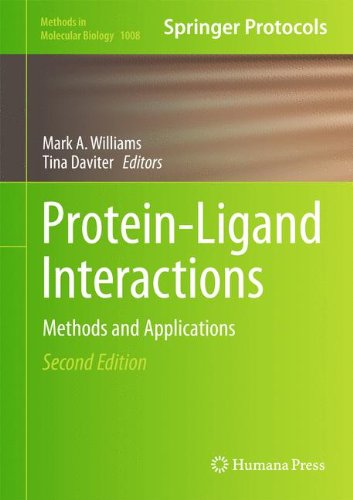

Most ebook files are in PDF format, so you can easily read them using various software such as Foxit Reader or directly on the Google Chrome browser.
Some ebook files are released by publishers in other formats such as .awz, .mobi, .epub, .fb2, etc. You may need to install specific software to read these formats on mobile/PC, such as Calibre.
Please read the tutorial at this link. https://ebooknice.com/page/post?id=faq
We offer FREE conversion to the popular formats you request; however, this may take some time. Therefore, right after payment, please email us, and we will try to provide the service as quickly as possible.
For some exceptional file formats or broken links (if any), please refrain from opening any disputes. Instead, email us first, and we will try to assist within a maximum of 6 hours.
EbookNice Team

Status:
Available4.6
39 reviewsProteins are the cell’s workers, their messengers and overseers. In these roles, proteins specifically bind small molecules, nucleic acid and other protein partners. Cellular systems are closely regulated and biologically significant changes in populations of particular protein complexes correspond to very small variations of their thermodynamics or kinetics of reaction. Interfering with the interactions of proteins is the dominant strategy in the development of new pharmaceuticals. Protein Ligand Interactions: Methods and Applications, Second Edition provides a complete introduction to common and emerging procedures for characterizing the interactions of individual proteins. From the initial discovery of natural substrates or potential drug leads, to the detailed quantitative understanding of the mechanism of interaction, all stages of the research process are covered with a focus on those techniques that are, or are anticipated to become, widely accessible and performable with mainstream commercial instrumentation. Written in the highly successful Methods in Molecular Biology series format, chapters contain introductions to their respective topics, lists of the necessary materials and reagents, step-by-step, readily reproducible laboratory protocols, and notes on troubleshooting and avoiding known pitfalls.
Authoritative and accessible, Protein Ligand Interactions: Methods and Applications, Second Edition serves as an ideal guide for researchers new to the field of biophysical characterization of protein interactions – whether they are beginning graduate students or experts in allied areas of molecular cell biology, microbiology, pharmacology, medicinal chemistry or structural biology.